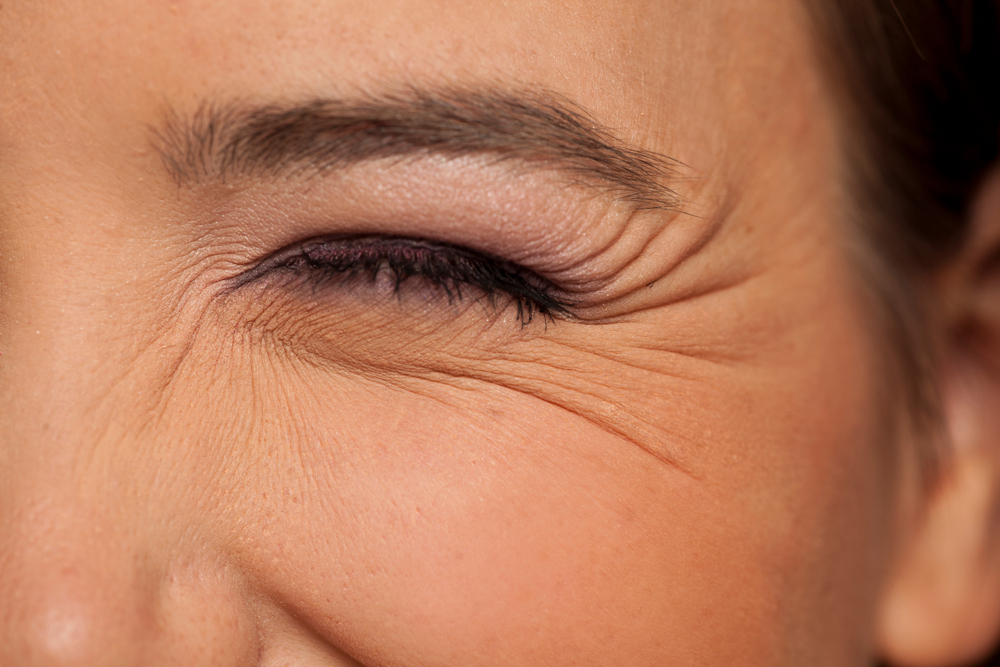Facial expression lines – where do they all come from? Forehead, eyes, mouth – wrinkles arise for the most diverse reasons. We are on the trail of them.
Facial expression lines – do we have a chance to banish them on our face?
We tolerate some of them, even becoming friends with them over the years. Ideally, expression lines are laughter lines. They show how much fun we have already had. Others disturb us so much that we want to get rid of them. These candidates include, for example, the frown line in the middle of our forehead (we have even dedicated a separate article to forehead wrinkles) or the nasolabial folds that dig into the cheeks next to our nostrils. But where do these lines actually come from and what can we really do about them? It’s like this: facial expressions cause wrinkles, lifestyle and the loss of moisture in the skin unfortunately also. A little wrinkle science.
Emotion wrinkles like the frown line – Dynamic wrinkles
Over the years, the skin becomes flabbier, drier and does not regenerate as quickly. The lack of collagen is to blame for the skin not being as firm. That is why wrinkles, which our face constantly forms, dig into our skin. The glabellar fold, called frown fold, for example.
What can you do about it?
To really replump up the wrinkle, one would have to proceed invasively, for example injecting Botox or hyaluronic acid. Botox paralyzes the facial muscles, but is expensive and its health consequences have not been researched. Hyaluronic acid fillers are less controversial because hyaluronic acid is a substance produced naturally in the body. The new injections are gentler and can be broken down by the body – the filler effect fades after four to six months. Alternatives that can also achieve good results are products such as serums or creams with retinol or peptides (we will explain once again exactly how wrinkle treatment with creams containing retinol or peptides works best), Q 10 and hyaluronic acid. But also a massage can relax the forehead and thus reduce wrinkles: Start with the index and middle finger at the root of the nose and then move upwards in the form of a V up to the hairline.
Wrinkles – Actinic wrinkles
The small vertical lines appear on the cheeks and around the lips. UVA rays penetrate deep into the skin and damage the connective tissue, creating wrinkles.
What can you do about it?
Fruit acid peelings and microdermabrasion can remove at least the upper layers of skin, which can then form new ones. Repairing deep skin damage is a challenge for dermatologists, laser treatments can help. Sunscreen with high filters (SPF 50) is mandatory to prevent sun damage and skin cancer.
Soft lines – Static wrinkles
This is how it begins: small fine lines spread over a large area where the skin is very thin. They become deeper over time and are visible even when the face is completely relaxed. Crow’s feet, laugh lines around the eyes, around the mouth – static wrinkles are influenced by gravity.
What can you do about it?
Loss of volume can of course be compensated with injections. Thread lifting is also one of the gentle lifting methods. Cosmetic products designed to help against collagen loss and the associated sagging contours can only achieve slight effects. Particularly effective are creams and serums that act against dry skin and are additionally enriched with anti-aging ingredients. Massages and facial gymnastics can – especially when used at an early stage – also bring success with expression lines.
Crumple zones – Temporary wrinkles
In the morning our face is sometimes decorated with wrinkles, our pillow has left traces. Over time, the pressure on collagen and elastin fibers in the skin leads to fine wrinkles on the chin, cheeks and forehead. While in our twenties they disappeared before the first coffee, in the forties they take much longer to become invisible again.
What can you do about it?
Switch to silk cushions. How does it work? Silk contains skin-identical proteins and amino acids and has the same pH value as our facial skin. This keeps the moisture level stable during sleep.

